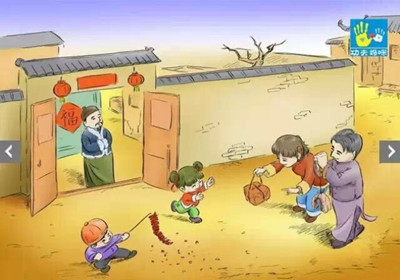Another way that Chinese used to scare off evil monsters at the start of the new year is the lion dance, let's now find out more about this Chinese tradition.

If you walk around a Chinese village during the New Year, you'll see a lot of red banners stuck on people's doors. Now these banners are messages of good fortune for the new year.











